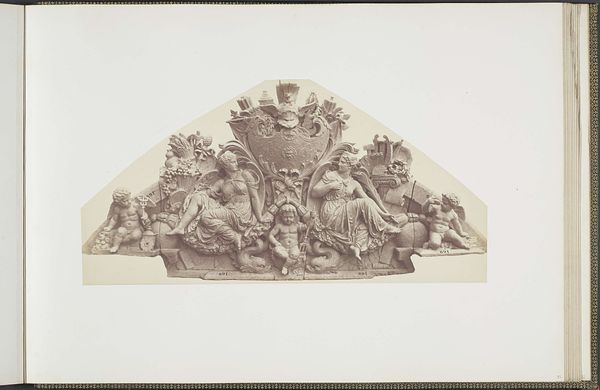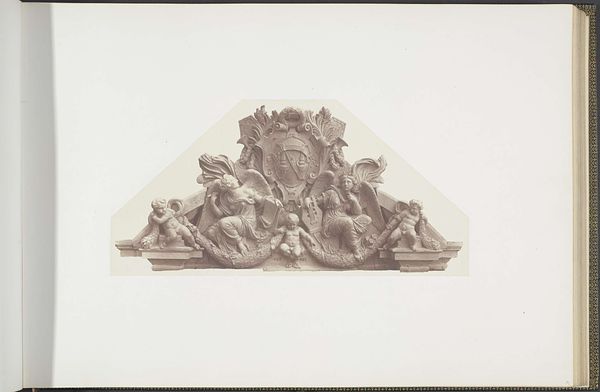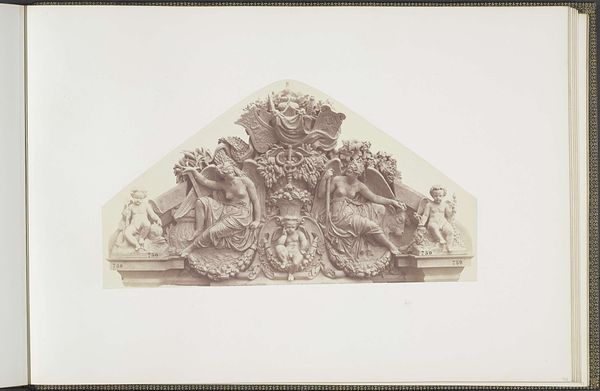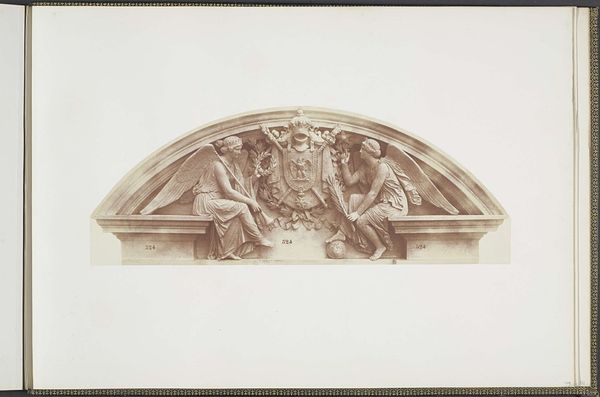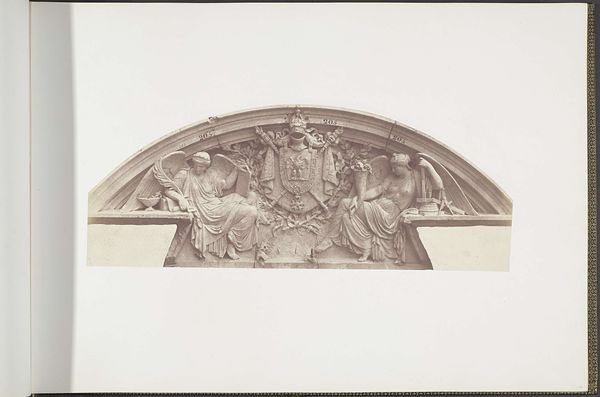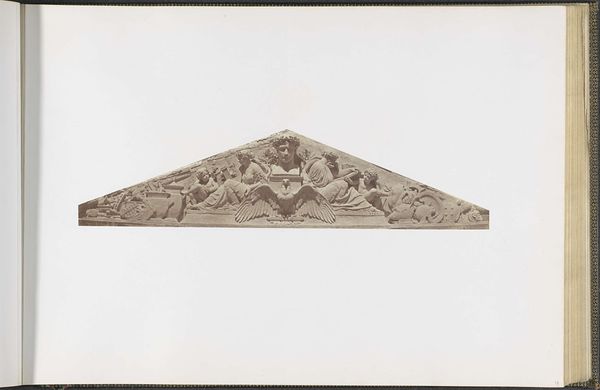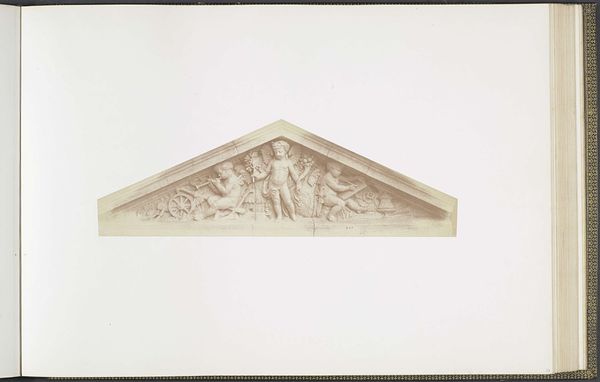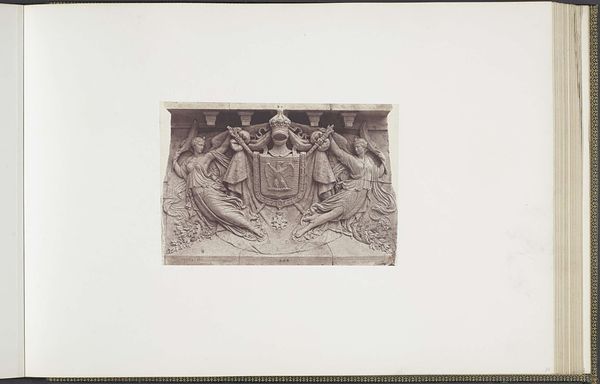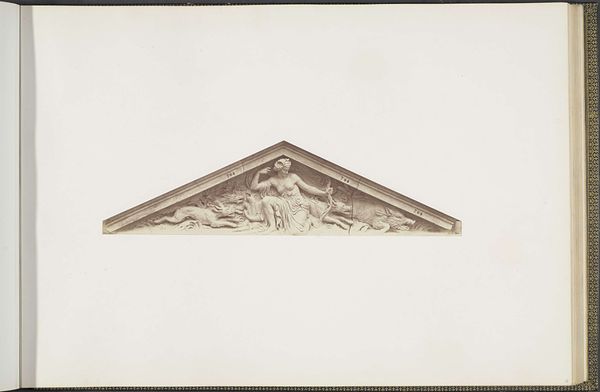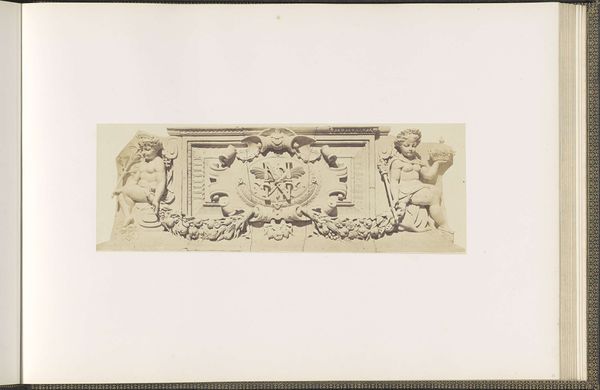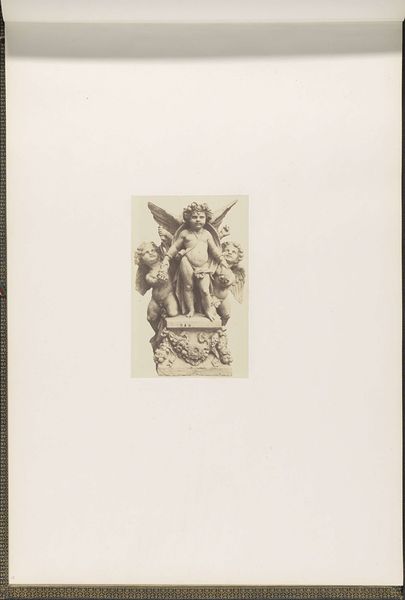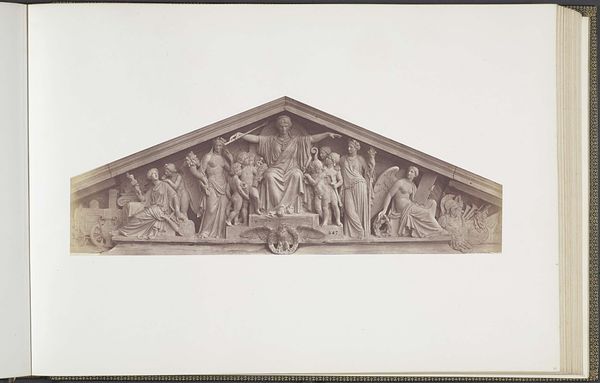
Gipsmodel voor beeldhouwwerk op het Palais du Louvre: "L'Abondance" door Eugène Guillaume c. 1855 - 1857
0:00
0:00
edouardbaldus
Rijksmuseum
photography, collotype, sculpture
#
allegory
#
photography
#
collotype
#
sculpture
#
history-painting
#
academic-art
Dimensions: height 378 mm, width 556 mm
Copyright: Rijks Museum: Open Domain
Editor: This collotype reproduction presents Eugène Guillaume's plaster model, "L'Abondance," intended for the Louvre sometime between 1855 and 1857. The grayscale makes it a bit ghostly, but the detail is impressive. I’m intrigued by this sort of artistic pipeline where one medium documents the ephemeral state of another. What do you think the use of photography adds here? Curator: For me, it brings the process and its attendant class connotations into sharper focus. This isn't simply a record, but evidence of a system. Baldus, known for his association with architectural projects under the Second Empire, essentially turns this artwork into a commodity ready for wider circulation through affordable prints. Think of the laborers quarrying the stone, Guillaume producing the model and, later, artisans executing the final design, and finally Baldus creating a photographic representation of it. Editor: So it’s about democratizing art production? Before this, few people would have gotten to see it. Curator: In a way. But not as straightforward as mere access. Collotypes, relatively cheap and easy to reproduce, are used here for more than just widespread availability; the printing process itself mirrors the labor division that was essential to academic art, while providing documentation, instruction, and advertisement all in one go. Who would have benefited the most from seeing this image? And how would their own class interests play into how the work might be received? Editor: It makes me wonder about all the stages in between - all the unseen labor hours needed for the piece's production and subsequent photographic documentation. Curator: Exactly. By viewing the work as a material object situated within broader systems of labor, economy, and display, we reveal its political dimensions and can explore its role in shaping taste, culture and class. Editor: Thank you, I am now rethinking the ways photographs influence our perceptions of art! Curator: And hopefully how we see everything else too.
Comments
No comments
Be the first to comment and join the conversation on the ultimate creative platform.
